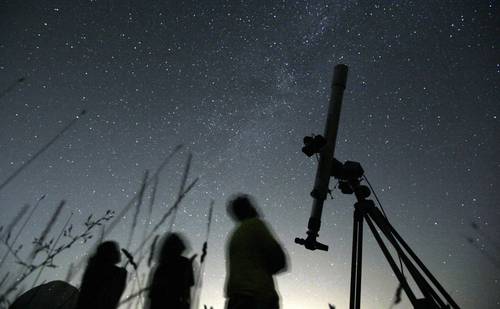The seven planets, Mars, Jupiter, Uranus, Venus, Neptune, Mercury and Saturn, will be briefly visible in the night sky in a Planetary parade
that will not happen again until 2040.
Four of them, Mercury, Venus, Jupiter and Mars, can be observed with the naked eye, but Saturn will be more difficult because it will be low on the horizon, so a telescope will be needed to look at the other two planets, Uranus and Neptune.
The best opportunity to see them all will be with a good view of the horizon and a clear sky. However, the time in which they will be ordered will be very brief.
Edward Bloomer, astronomer of the Real Observatory of Greenwich, told the BBC: There is a unique opportunity to have seven planets in a convenient place for you to look for them
.
As the sun puts on, Saturn and Mercury will also be put on, which will make them particularly difficult to see.
There are really only a few minutes after sunset to see them before they disappear under the horizon. After that, you can still see Venus, Jupiter and Mars clearly for much longer
he added.
A similar parade took place in June last year, but only two planets could be seen without any special equipment. Six planets were visible in January – four with the naked eye – and now a faint mercury joins the group.
The planets of our solar system orbit around the sun approximately in the same plane as the Earth. As they do at different speeds and distances from the sun, there are times when they seem to align from the perspective of the third planet creating a visual show, although they remain separated by large distances in space.
Venus and Jupiter will be the easiest to detect due to their brightness, while Mars will have a distinctive reddish tone.
Uranus is technically visible to the naked eye, but ideal conditions are needed
he explained.
To improve the possibilities of seeing so many planets, it is recommended to go to a place with a clear view of the horizon and minimal light pollution.
In the country, the National Institute of Anthropology and History (INAH), together with the University of the Tepeyac (UT), will organize a free astronomical observation day this Friday at the Teotihuacan Museum Beatriz de la Fuente, in the archaeological zone of Teotihuacan (ZAT).
The scientific event will take place from 5:30 p.m. to 7 p.m., attendees must complete a record, since the act has a limited quota to 120 people, who will see the stars using an electronic telescope.
The observation is coordinated by specialists from the Department of Museums and Educational Communication of the Archaeological Zone of Teotihuacan; It will also include a conference that the archeoastronomes will teach Ismael Arturo Montero García and Aarón Uriel González Benítez, attached to the UT and the astronomical society of Iztapalapa, respectively.
